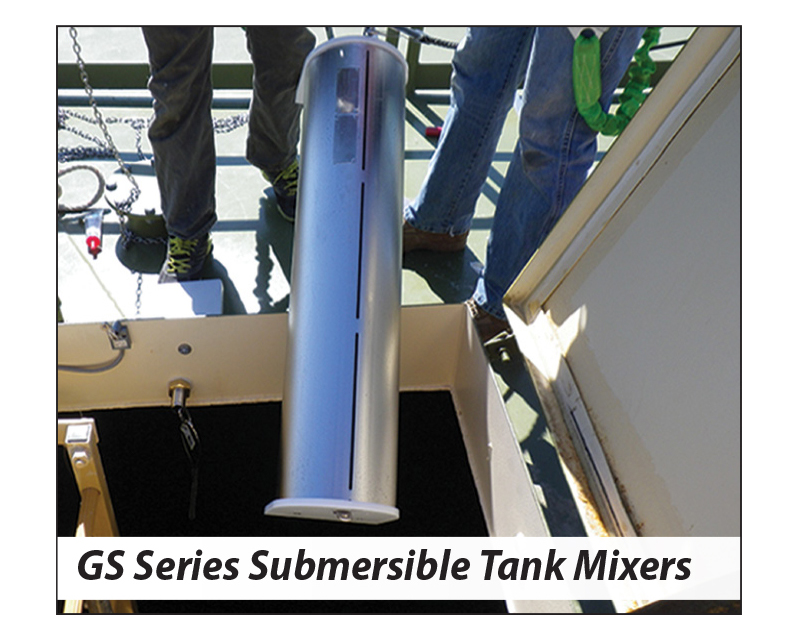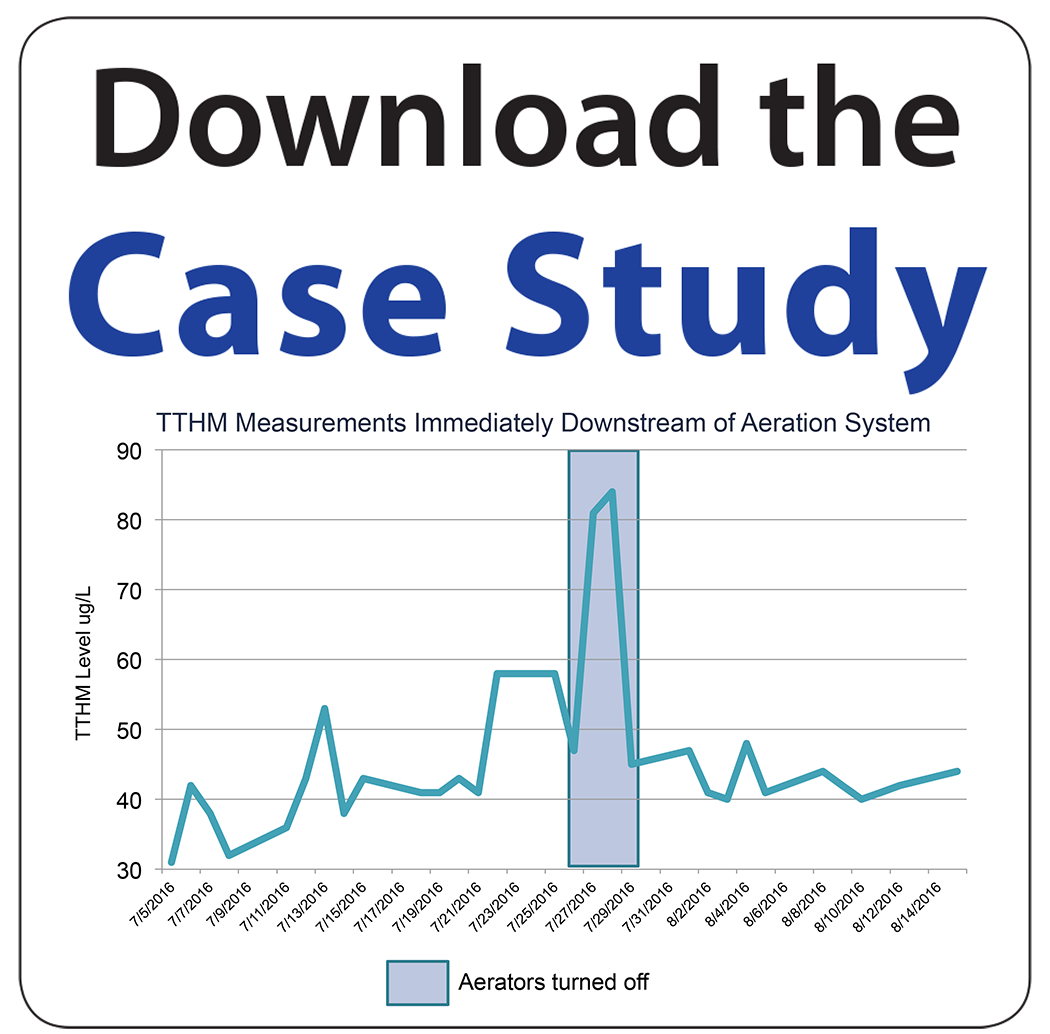In The Mix E-Newsletter- August / September 2019
Visit us at these upcoming conferences!
- National Rural Water - Nashville, Tennessee - September 9-11
- WEFTEC - Chicago, Illinois - September 22-25
- WQTC AWWA Water Quality - Dallas, Texas - November 3-7
- Storm Water Solutions - Chicago, Illinois - November 12-14
- NALMS - Burlington, Vermont - November 11-15
In This Issue
 5 Important Considerations- Evaluating A Potable Tank Mixer
5 Important Considerations- Evaluating A Potable Tank Mixer
 It's Not Too Early To Think About Winter Ice Damage To Your Storage Tanks
It's Not Too Early To Think About Winter Ice Damage To Your Storage Tanks
 Featured Case Study- TTHM Reduction In A 1MG GST
Featured Case Study- TTHM Reduction In A 1MG GST
 Cyanobacteria Blooms In The News, Dog Deaths Reported
Cyanobacteria Blooms In The News, Dog Deaths Reported
 Lake Learning- Two Helpful Guides
Lake Learning- Two Helpful Guides
 Find Medora Corporation On Social Media!
Find Medora Corporation On Social Media!
Download Our Water Quality Solutions Brochure to learn how Medora can help improve all your water!
Check out our Video Library for more educational videos and information!

 5 Important Considerations When Evaluating A Potable Tank Mixer
5 Important Considerations When Evaluating A Potable Tank Mixer
You’ve decided mixing is the next best strategy to easily improve the water quality in your system. Now it’s evaluation time. Here are a few simple considerations when sifting through your tank mixing options.
#1 Initial Mixer Cost.
Many of us make a purchasing decision based on initial cost alone. Cheaper often times means exactly that… cheap; however, more expensive doesn’t always equate to a better product either. There can be hidden costs like poor component life cycles and required maintenance that can actually turn a low initial cost into a higher overall life-cycle cost.
GS Series Tank Mixers balance cost, quality, and reliability to maximize the most mixing per dollars spent.
#2 Strength of Warranty.
A strong equipment warranty not only protects your investment, it can be thought of as another way to gauge manufacturer confidence in their equipment. A skimpy or weak equipment warranty should be a red flag as to its possible performance.
GS Series Tank Mixers come with one of the strongest (if not THE strongest) warranties in the industry.
#3 Positive Motor Cooling.
Submersible motors generate a lot of heat and require ample amounts of water flow over them for cooling. Proper cooling is needed for maximum motor life especially in tank applications.
Be sure to verify the tank mixer has positive motor cooling. Some mixers with an open impeller design do not have the means to do this and can in turn experience significant motor life issues.
GS Series Tank Mixers have a flow sleeve that forces 100% of the impeller flow past the motor for maximum positive motor cooling . This results in superior motor life.
#4 Safety.
More specifically, safety as it relates to impeller designs. Mixers with an “open impeller” style can cause unforeseen hazards such as winding (i.e. cathodic protection, internal wires or cables getting caught in the impeller) or direct tank damage (i.e. an event causing direct impeller to tank contact while in operation damaging tank coatings and internal surfaces).
GS Series Tank Mixers have an enclosed impeller design which is very safe and is not susceptible to winding or direct impeller / tank contact.
#5 Ease of Deployment.
This is another area that can inflate the actual cost of mixing equipment. Does the tank need to be drained? Does the tank need to be taken offline? Does the equipment need to be fixed in place or hard-mounted inside the tank? Is retrieval going to be a major project too? All these factors can dramatically increase the actual cost of a tank mixer.
GS Series Tank Mixers were specifically designed for ease of deployment in as little as a few hours and without draining or taking the tank offline. Retrieval and re-deployment are easy too!
GS Series Tank Mixers manufactured by Medora Corporation are an industry-leading solution to improve water quality in your clearwells and distribution tanks. Please contact us for a no-obligation evaluation and quote.

 It's Not Too Early To Think About Winter Ice Damage To Your Storage Tanks
It's Not Too Early To Think About Winter Ice Damage To Your Storage Tanks
Late August / early September is the time of year northern areas in the US begin to sense the switch from summer to fall. Days aren't as hot. Night are just a bit cooler. It's a signal that winter and its freezing temperatures are on the way whether we like it or not.
There is time yet this year to get ahead of the curve. One of the best ice defenses is to make sure your tanks are circulated thoroughly. Check out our quick and easy white board video and contact us to disuss how Medora can help you fight the ice.
 Featured Case Study- TTHM Reduction Downstream Of A 1MG GST
Featured Case Study- TTHM Reduction Downstream Of A 1MG GST
In-tank spray aeration systems can solve TTHM problems down the line.
 System Overview: 90% of water in this system comes from a third-party water treatment plant and is pumped 8 miles to the H-36 Ground Storage Tank. From here the water is distributed to the western pressure zone where all Stage 2 DBPR THM sample sites are located. The system density is about 20 customers per mile and can take up to 10 days before the water is used.
System Overview: 90% of water in this system comes from a third-party water treatment plant and is pumped 8 miles to the H-36 Ground Storage Tank. From here the water is distributed to the western pressure zone where all Stage 2 DBPR THM sample sites are located. The system density is about 20 customers per mile and can take up to 10 days before the water is used.
Pre-Deployment Conditions: Several testing locations downstream of this tank were out of compliance and as high as 110 μg/l for total trihalomethane (TTHM).
Project Objectives: Achieve a 40% TTHM reduction based on a maximum usage of 1.5 million gallons per day and maximum tank ll rate of 2,500 gallons per minute.
(Read More)

 Cyanobacteria Blooms In The News
Cyanobacteria Blooms In The News
Dog deaths in the southeast get national attention.
 A lake or pond is suffering a cyanobacteria bloom. A dog plays in and drinks the water. Mere hours later the dog dies from acute cyanotoxin poisoning. It happens that fast and it happens more often than people think. During the week of August 12th, stories of dog deaths in the southeast hit national news followed by simlar stories from other areas of the US. Many people are plain unaware the dangers a cyanobacteria bloom can bring not only to their pets but to themselves as well.
A lake or pond is suffering a cyanobacteria bloom. A dog plays in and drinks the water. Mere hours later the dog dies from acute cyanotoxin poisoning. It happens that fast and it happens more often than people think. During the week of August 12th, stories of dog deaths in the southeast hit national news followed by simlar stories from other areas of the US. Many people are plain unaware the dangers a cyanobacteria bloom can bring not only to their pets but to themselves as well.
How can someone distinguish a cyanobacteria bloom from types of safe green algae?
Step 1 is quite simple... beware green water; however, not all green water is a cyanobacteria bloom and not all cyanobacteria blooms produce toxins. The Kansas Department of Health and Environment put together a simple cyanobacteria (blue-green algae) test to help people better understand.
Read it here.
 Lake Learning- Two Helpful Guides
Lake Learning- Two Helpful Guides
Medora Corporation has compiled two new reference guides to help you better understand lake vocabulary, processes and treatment options in laymen's terms. Medora's lake knowledge is not only based on study, but also on real-world, on-the-water field work. We think these guides are a useful resource for lake & pond stakeholders as they work to maintain and improve their water quality.






